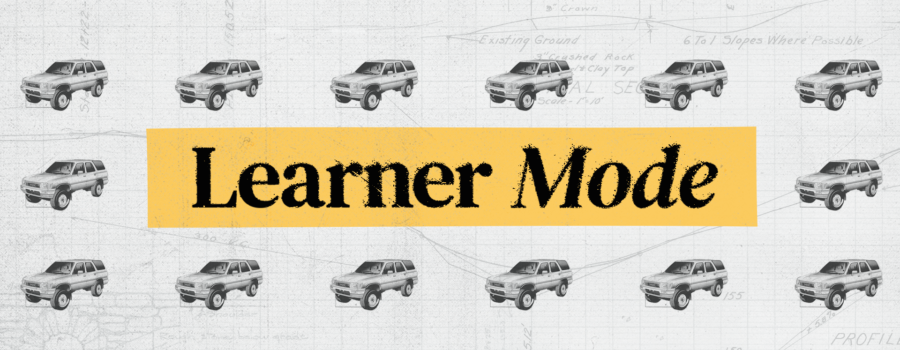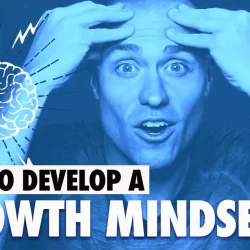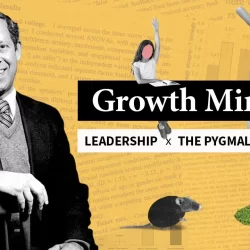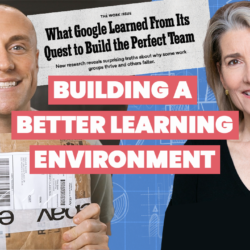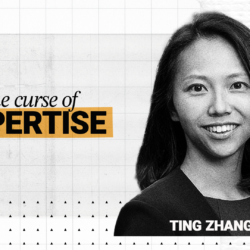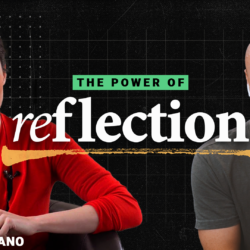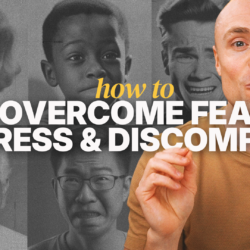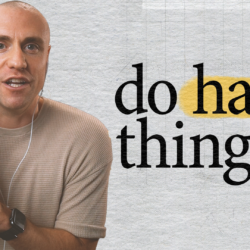My fiancée is thinking about getting a 4Runner.
For the last week we’ve been doing our research – scrolling reddit, learning about the different options and trims, arguing about what color looks the best.
During this time something weird has happened.
Every time we leave the house the streets are filled with 4Runners. These things are everywhere.
One of two things is going on:
1. Everyone in the country has decided to get a 4Runner this week
2. Because we’re thinking about them more, we’re more likely to notice them when we’re driving around
I’m no scientist, but I think it’s #2.
This is a symptom of something called the frequency illusion. When something is top of mind, when we’re searching for it, we’re more likely to take notice and see it.
We can leverage this when it comes to learning.
During our workshops we spend a lot of time digging into the obstacles of learning – why we don’t learn.
One of the most common: “We don’t have enough time.”
I hear this. Let’s be real, we all probably feel like we have a full plate most of the time, if not all the time. Thinking about how to find more time to practice and build new skills feels daunting.
There’s good news. For most of the skills that matter to you and me, it’s not about staying up until midnight on a Tuesday practicing that skill alone in your living room. For most of the skills we care about, we have great opportunities to practice them every day.
When we’re in learner mode we see our daily tasks and experiences for what they really are: reps.
Every conversation is an opportunity to practice more attentive listening. Every project is an opportunity to step into a leadership role. During every meeting we have many opportunities to practice giving and receiving feedback.
For most skills, we don’t need to spend more time practicing at home, we just need to be more intentional with the reps and opportunities that we get each day.
Also, as we discussed in our piece on quality practice, these “game-like” reps are usually better for learning. We’re practicing the skill within the context we plan on using it.
Activating this learner mode helps us become more efficient with our development. We’re getting better at stuff, without adding more to our busy schedules.
Putting Theory into Practice
The US Women’s Volleyball team is one of the best groups of learners I’ve ever seen.
In preparation for the Olympics, they’ve been using an approach they’re calling “Declaration Day.” Every two weeks, every coach and every player goes up to a whiteboard in their facility and writes down the skill they’re going to be intentional about building for those two weeks.
They still do the same practice they had planned, with the same drills, same exercises, same effort, etc…But by putting intentions in writing, identifying and committing to a specific aim, everyone is more engaged in and extracting more value from the session. They’re more likely to see, recognize and take advantage of the reps and opportunities that occur during the practice.
In 2020 I read Storyworthy by Matthew Dicks. It’s essentially a master class on how to become a better storyteller. He unpacks a variety of tools and tactics to craft more effective stories.
Now that I know about these strategies, I’ve started to see them everywhere. I can recognize when a movie or book or speech is effectively crafting a story and building engagement, and I can also recognize when and why some fall short.
Understanding storytelling tools refined my lens and now I see the good and bad examples all around me. This awareness spills over and improves my storytelling skills over time. Every movie, every book, even some commercials are now reps, examples that stack up over time and make me better at storytelling.
“Yes, some people are slower learners. But the machinery (in the brain) that controls learning is plastic – you can improve it… And the magic is that once you get into a learning mode. Once you’re really trying to improve yourself on a regular basis and acquiring new skills… you actually improve the machinery that controls learning for everything you’re trying to do. So it’s a really good idea to get into a learning mode.” – Dr. Michael Merzenich*
Action Items
• Spend more time in learner mode. Hold your own Declaration Day. Every few weeks take 2 minutes to write down a skill you’re going to be more intentional about building
• Reframe day-to-day tasks as opportunities. Make a habit of asking: What can this teach me? What can I learn from this?
• Spend a few minutes reflecting at the end of each day
*Dr. Merzenich has published more than 150 articles in leading peer-reviewed journals (such as Science and Nature), and received numerous awards and prizes (including the Russ Prize, Ipsen Prize, Zülch Prize, Thomas Alva Edison Patent Award and Purkinje Medal). He has been granted nearly 100 patents, and he and his work have been highlighted in hundreds of books about the brain, learning, rehabilitation, and plasticity. In 2016, Dr. Merzenich was awarded one of the world’s top neuroscience prizes, the Kavli Prize, for his achievements in the field of brain plasticity. I had the honor of interviewing him a few years ago.

